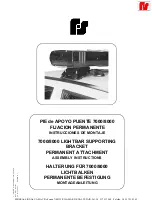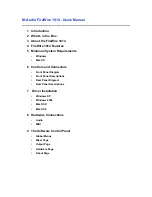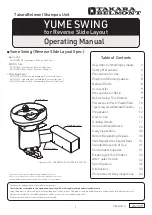
User’s Guide – version 3.5
NetFlow Tracker
34
DiffServ
This will select only traffic bearing one of the selected differentiated service code
points. Since DiffServ and ToS use the same field in the IP header you should not use
both filters at the same time. You can assign a name to a code point using the
DiffServ
Names
settings page.
Traffic class
This filter selects traffic with the given traffic class. In order for traffic classes to be
identified the NetFlow device must support the functionality and its traffic class
mapping must be configured in
Device Settings
.
Source AS
You can select traffic bearing one of a set of source AS numbers. Whether this is the
origin or peer AS depends on the configuration of the router (see
Appendix 1
). You can
enter an AS number manually or select from the set of private-use ASes configured in
the
AS Names
settings page; note that you cannot select public ASes by name to avoid
the filter page being excessively large.
Dest AS
This restricts the source data to traffic bearing the given destination origin or peer
ASes.
Src/dest AS
This filter considers traffic to or from the given origin or peer ASes.
Source subnet
This will select traffic with the given source subnet. You can enter the network address
and mask length manually or select from the subnets configured in the
Subnet Names
settings page. Note that the subnet mask used by the router to route the traffic is
ignored when applying this filter.
Dest subnet
This filter selects traffic with the given destination subnets. Note that a destination
subnet filter of 224.0.0.0/4 will select multicast traffic.
Src/dest subnet
This filter selects traffic to or from the given subnets.
Source mask
This will select traffic routed using the given source network mask.
Dest mask
This filter selects traffic with the given destination network mask.
Src/dest mask
This filter selects traffic with the given source or destination network mask.
Next hop
This will filter traffic according to the next hop used by the router in routing the traffic.
















































